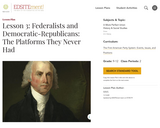
This resource contains a presentation on consumer privacy.
- Subject:
- Social Studies
- Material Type:
- Presentation
- Provider:
- Practical Money Skills
- Date Added:
- 03/14/2017

This resource contains a presentation on consumer privacy.

These activities allow students to demonstrate their knowledge of consumer privacy.

This guide outlines the lesson where students discuss how public and private records are accessed and used by various organizations, as well as review privacy laws to protect your information.

This presentation contains slides on making decisions.

This resource contains presentation slides on making decisions.

This resource contains activities to provide students an understanding and an awareness of the factors that can influence decisions. Students practice analyzing a problem, indentifying options, and decision-making.

This resource gives students an understanding and an awareness of the factors that can influence decisions. Students are introduced to basic decision-making methodologies and are given structured practice in analyzing a problem, indentifying options, and decision-making.

In this lesson, students learn about data used to measure an economy’s health—inflation/deflation
measured by the Consumer Price Index (CPI), output measured by Gross Domestic Product (GDP) and
unemployment measured by the unemployment rate. Students analyze graphs of these data, which
provide snapshots of the economy during the Great Depression. These graphs help students develop an
understanding of the condition of the economy, which is critical to understanding the Great Depression.

People suggest various causes for the Great Depression. In this lesson, students act as newspaper reporters
to learn about this time in history. These reporters look for information from fictitious letters that reflect actual problems and people’s concerns during this tragic time in our economic history. Based on what they learn through the letters, students construct a newsletter explaining the cause(s) of this economic catastrophe.

Whether it be called the Civil War, the War between the States, the War of the Rebellion, or the War for Southern Independence, the events of the years 1861-1865 were the most traumatic in the nation's history. This lesson plan will introduce students to wartime politics.

The rivalry between the Federalists and Republicans in the early days of the American Republic was bitter. What were the key positions of the parties? How important to the parties' positions were their basic attitudes toward constitutional interpretation (Federalists, broad interpretation / Democratic-Republicans, strict interpretation)? Which positions of either party resonate in the politics of today?

This resource contains a powerpoint on the art of budgeting.

This resource contains presentation slides on the art of budgeting.

With this resource, students identify their goals and create a budget.

In this lesson, students will be encouraged to take the time and effort to develop their own personal financial goals and budget.

In this lesson, students participate in an activity that illustrates falling wages, rising unemployment and
falling prices. They learn about the role of the collapsing U.S. banking system in causing the Great
Depression. They participate in a simulation to learn what a bank failure is and how bank failures can
lead to bank panics. Finally, they observe the impact that many events occurring at the same time might
have on the economy

Lesson Three seeks to clarify their understanding by taking a close look at one of the oldest and most fundamental of American values—private property rights. In examining the privileges and limitations of owning a house, as contrasted, for example, to owning a beautiful stream or a potentially danÂgerous weapon, students investigate how rules, customs, and laws define ownership. (See the link to the activities at the bottom of the page.)

In this lesson, students examine statistical data related to the Great Depression, identify problems and offer solutions. Students reflect on the course of action taken by then-President Franklin Delano Roosevelt (FDR) and focus on New Deal programs. Students classify New Deal programs as relief, reform or recovery and analyze the effects of these programs on the unemployment rate, government spending, Gross Domestic Product (GDP) and the role of government in the economy.

This presentation contains slides on living on their own.

This resource contains slides on to accompany the lesson.